Love ‘em or hate ‘em, just leave ‘em alone…
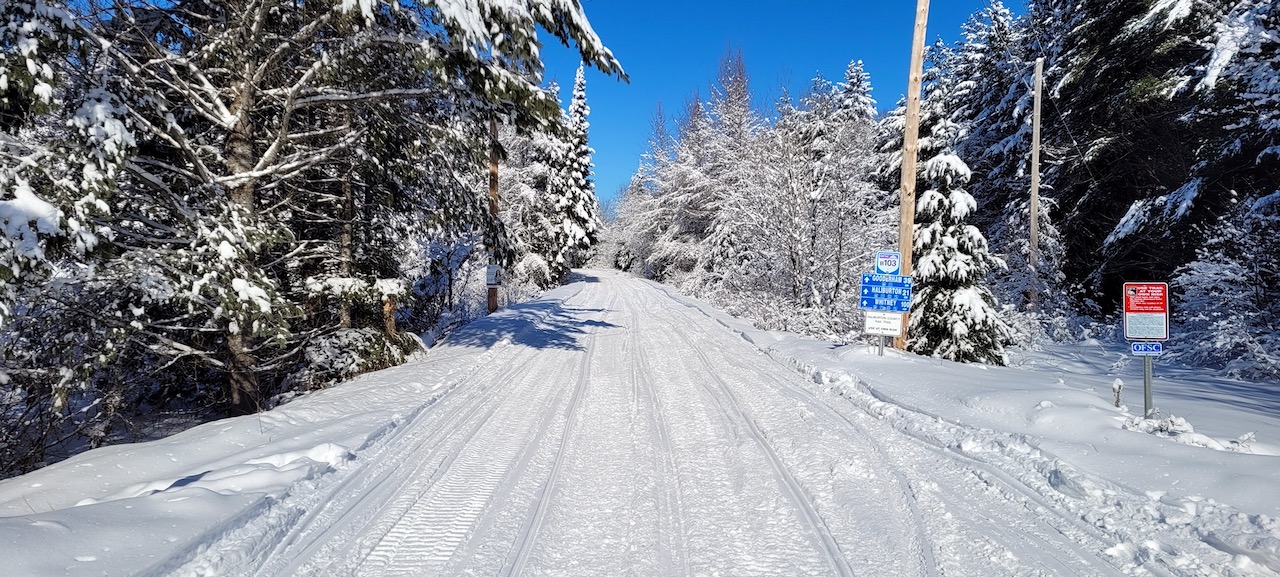
Signs on snowmobile trails mark the way for easy navigation. Photo credit: Al Fletcher
Related: Trail SignTips
Ya gotta feel for signs on snowmobile trails. They’re largely overlooked, under appreciated and generally taken for granted. Like that old 5 Man Electrical Band song says: “Sign, sign, everywhere a sign, blocking out the scenery, breaking my mind. Do this don’t, don’t do that can’t you read the signs?”
Sure, signs of every kind are a common part of our daily life. And one could certainly argue that we suffer from increasing signage clutter everywhere we go. Except on snowmobile trails.
But what should we expect?
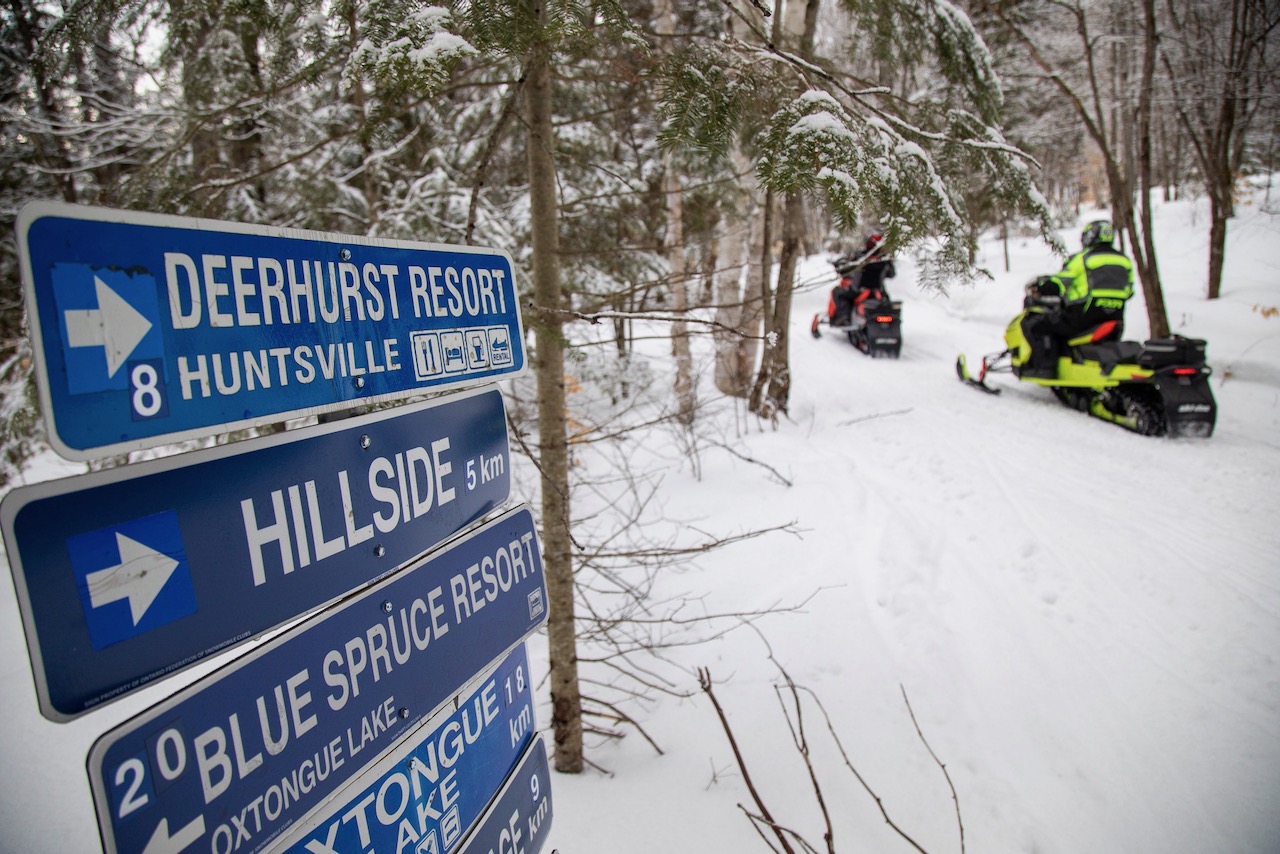
Destination signs with distances make ride timing easier. Photo credit: Martin Lortz
What Do Signs on Snowmobile Trails Do?
Snowmobile trail signs help riders find their way, stay on the trail, and have better and more secure riding experiences. They also deliver valuable reassurance and information for necessary services. Plus, they inform when a trail ends or is closed, and where there’s no trespassing. Without signs on snowmobile trails, our riding simply wouldn’t be anywhere near as enjoyable, comfortable or even doable. But signage is never a substitute for rider knowledge, choice or vigilance. So newbies need to learn about them as well as everything in my beginners tips.
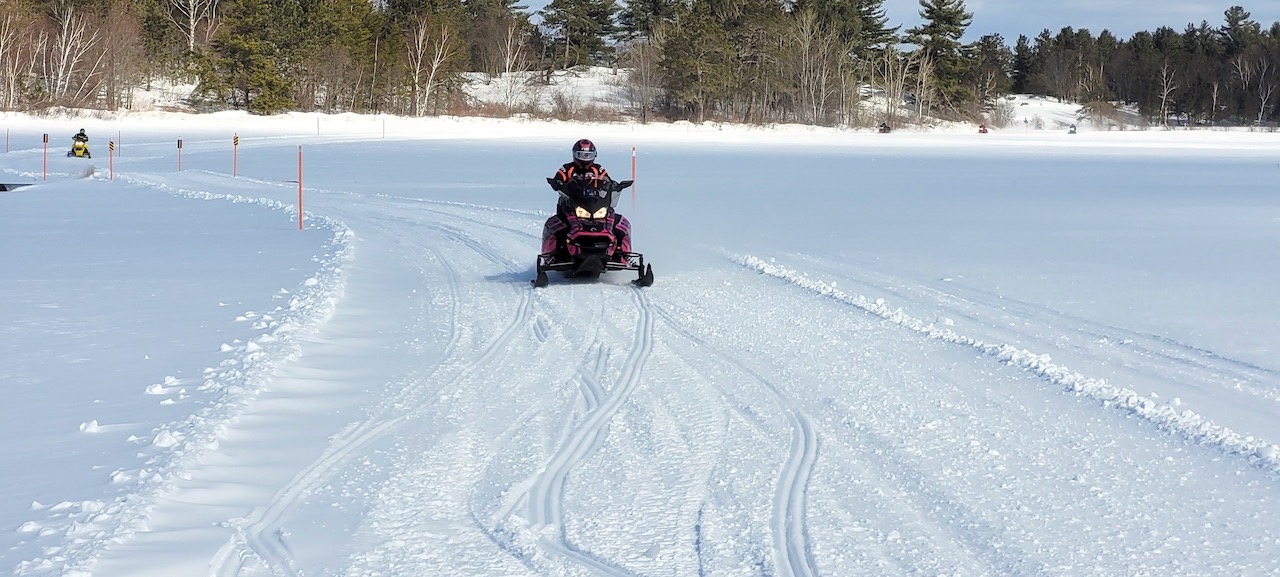
Signs on snowmobile trails include stakes to mark fields and ice crossings. Photo credit: Al Fletcher
How Do They Get There?
Snowmobile trail signs don’t just appear by chance. Nor, as in any wilderness environment, is there any assurance or guarantee that signs will be there at any given time or place. That said, club volunteers place signs on trails as a courtesy and convenience, to provide visual assistance for riders. Volunteers go to great lengths to instal, maintain, replace, and update them properly. These regulatory, cautionary, destination, directional and informational signs and map boards, also includes the field and lake stakes that help mark trail edges, private property boundaries and ice crossings, and the posts that most signs are affixed to.

Signs on snowmobile trails shot to hell like this one add to signage costs.
What Do Signs on Snowmobile Trails Cost?
One other thing that clubs do with snowmobile trail signs is pay for them. For a trail system as large as the 30,000 kilometres operated by members of the Ontario Federation of Snowmobile Clubs, trail signs are a considerable expense. My educated guess is upwards of a couple of hundred thousand signs are in place across Ontario with an estimated replacement value of several million dollars.
The cost wouldn’t be quite so steep if so many signs on snowmobile trails weren’t deliberately vandalized or stolen every year. Signs shot full of holes, knocked down, run over or gone missing. To say nothing of the ones damaged by storms, fallen trees, wildlife, direct sunlight or simply past their best-before date. Neither humans or nature seem to have enough respect for snowmobile trail signs, so signage a never ending task – or expense.

All the signs on snowmobile trails that come down at season’s end have to be transported and stored.
How Often Do Clubs Handle Signs?
Now let’s remember to factor labour into the cost equation. That sign replacement value doesn’t take into account the labour cost (if volunteers didn’t do it for free) associated with many of these signs. It’s typically a three-step installation (fall), removal (spring) and re-installation (next fall) process that goes on perennially. And any time there’s a major meltdown, countless fallen signs and stakes may have to be repositioned properly to get the trails ready again. An OFSC trail cannot be changed from RED (Unavailable) to YELLOW (Limited Availability) or GREEN (Available) on the OFSC Interactive Trail Guide unless and until that trail is properly signed according to the approved OFSC Snowmobile Sign Guidelines provide to all clubs.
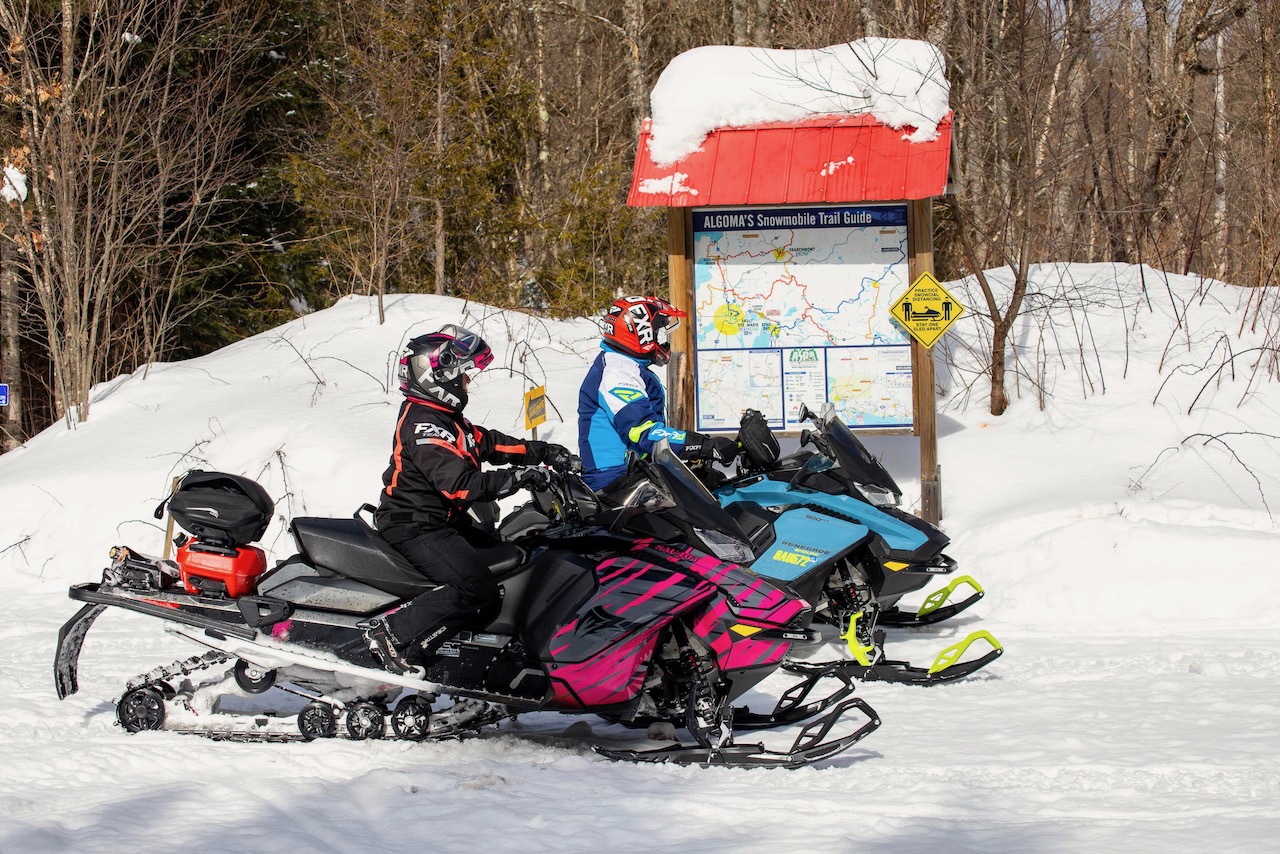
“You Are Here” map boards are among the most useful signs on snowmobile trails. Photo credit: Martin Lortz
What Can Snowmobilers Do To Help?
Snowmobilers have an important role to play with trail signs. It starts with minding the messages they contain. Next is to treat snowmobile trail signs with the respect they deserve by not breaking or riding over them. Also, please report damaged or missing signs to the next groomer operator you see or to the local snowmobile club. And if you come across any yahoos deliberately interfering with signs on snowmobile trails, report them and grab a photo if possible. Finally, don’t be one of those who uses stolen snowmobile trail signs to decorate your man cave. Bottom line: the money for signs comes from trail permit revenues, so every dollar wasted unnecessarily fixing and replacing them is one less dollar for grooming!
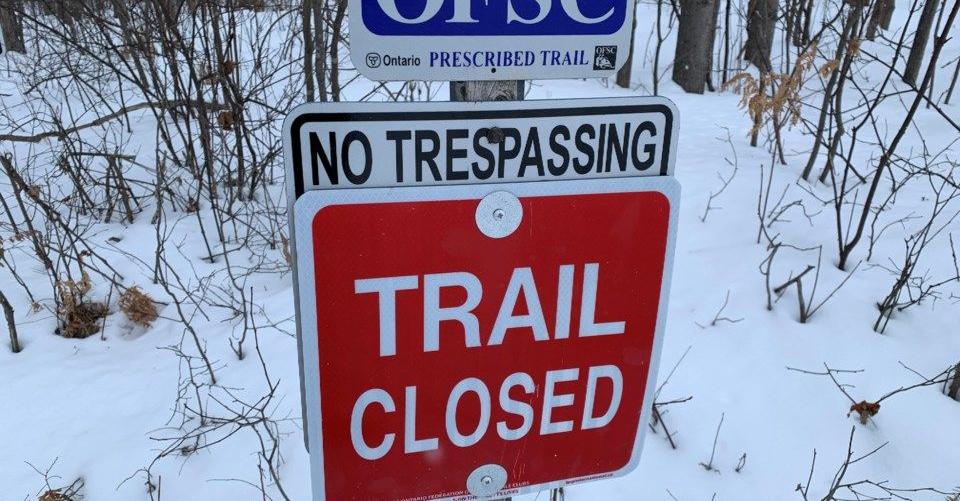
When you see this sign, don’t go!
My Last Word
Trail signs are serious business, but I’ve also seen some signs that have made me laugh out loud.
That said, signs are in place to help, but trail riders should always be prepared to find their own way. That’s where snowmobile trail apps, GPS, and the most recent paper map come into play. And remember, even if there’s no STOP sign at a road crossing, bring your sled to a full and complete stop and look both ways before proceeding. A sign also won’t tell you trail status or condition, so be sure to check your snowmobile association’s Interactive Trail Guide before heading out.
The tips and advice in this blog are the opinions of the author, may not work in every situation and are intended only for the convenience and interest of the reader, who has the personal responsibility to confirm the validity, accuracy and relevancy of this information prior to putting it to their own use.
